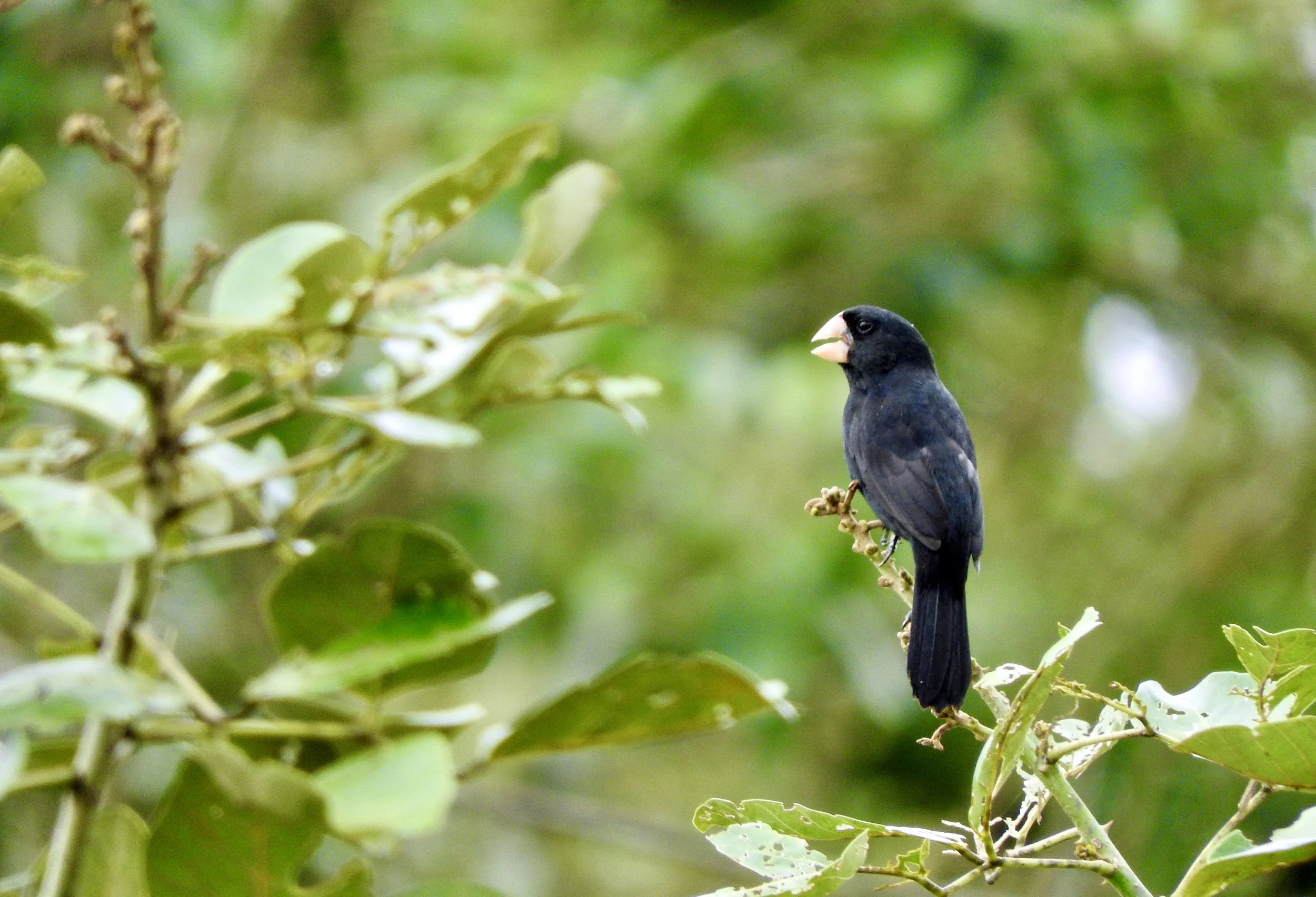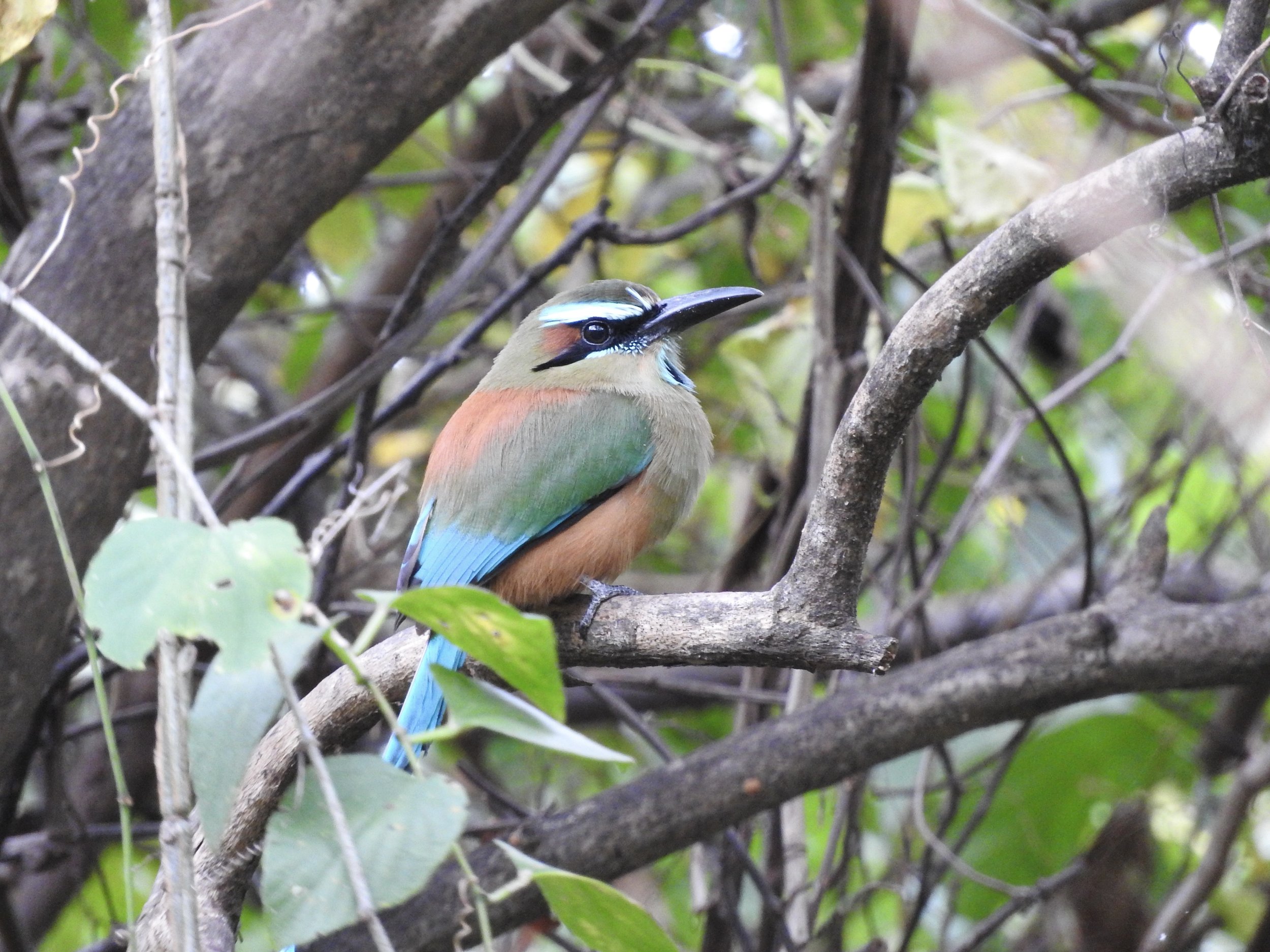Birding Costa Rica: Snowcaps and Ground-Sparrows
Snowcap
In Part Seven of Chris’s Costa Rica birding adventure, he finally gets to see the magical male Snowcap hummingbird and dips on an endemic Ground-Sparrow (for now!).
Once again, we got up early at our hotel, Villa Florencia, bags packed and ready for another full and active day of birding. Today we would be visiting a nearby site called El Copal before driving on to our accommodation for the final two nights of the trip, Hotel Quelitales. En route from El Copal to Quelitales, we’d be stopping at a coffee plantation to try and tick off one of Costa Rica’s four mainland endemic species, the recently-split Cabanis’s Ground-Sparrow. Another long day, but one that carried the promise of a host of excellent birds.
Those of us who hadn’t birded in this region before had been a bit disappointed to miss out on the male Snowcap hummingbird yesterday. Our guide, Diego, had casually mentioned that it was sometimes seen at a verbena patch at El Copal, but we didn’t get our hopes up. So imagine our delight when we parked in front of the patch and were instantly greeted by not one but two male Snowcaps feeding on the purple flowers. It turned out that Diego had been messing with us: he knew that male Snowcaps were regular on these verbenas but had wanted to give us the organic surprise of an unexpected bird. Nice one, Diego!
Birding Fact: the tiny Snowcap (Microchera albocoronata) is one of the smallest hummingbirds in Costa Rica and, at just 6.5 cm in length and weighing in at 2.5 g, it’s not much bigger than the Bee Hummingbird (Mellisuga helenae) which is recognised as the smallest bird in the world. This Cuban endemic measures about 5.5 cm and weight less than 2 g!
One of the stunning male Snowcaps we saw at El Copal
We watched these two males feeding for a long time before heading up to the main lodge of the reserve. El Copal is an inspiring story of community-driven conservation - the collective consists of 17 local rural farmers who, in 1986, took out a bank loan and bought nearly 200 hectares of surrounding land for conservation. This land is managed for conservation, and over 75% of it consists of primary forest. They offer accommodation, local meals, guiding services, hiking, and, of course, birding along the three forest trails that snake through the jungle. It’s always a pleasure to support such positive community birding initiatives. So we set out onto the trail inspired and ready to experience some of the 400+ species recorded at El Copal.
The view from the lodge at El Copal
The wide path through the forest climbs steeply up, with open views over the canopy on one side. The habitat was very similar to Rancho Naturalista the day before, and we encountered several mixed tanager flocks containing Speckled and Emerald Tanagers, as well as lovely views of a Fasciated Antshrike. This was the first place we saw Black-faced Solitaire, which seemed to be especially active during the morning, with at least three individuals seen.
At one point, Diego played the call of the Yellow-eared Toucanet, fishing for a response from this target species. Finally, a toucan-like bird flew up into a nearby tree, and we all excitedly trained our bins on the canopy. To our “disappointment,” the bird was a Northern Emerald-Toucanet. A good bird for sure, but one we’d already seen a few times this trip. Further down the path, though, we noticed our companion Dale Forbes looking very excited. He appeared to be looking at the same area of the canopy, but it seemed odd that he’d get that animated over a Northern Emerald-Toucanet.
“Have you seen the toucanet?” he called back to us, to replies of “the Northern Emerald?” “No,” he responded, “the Yellow-eared!” What?! It turned out that both a Northern Emerald and Yellow-eared Toucanet had arrived at the same time just a few meters apart in the same tree. Quite a coincidence, but certainly a happy one. We enjoyed excellent views of the Yellow-eared Toucanet, which was even joined by its mate. Thankfully Dale was walking a bit further back, or we might all have missed it!
Birding Fact: the Yellow-eared Toucanet (Selenidera spectabilis) is a member of the genus Selenidera, which contains six species of dichromatic toucanets. ‘Dichromatic’ refers to the color differences between males and females: unlike most toucans, the males and females of Selenidera are sexually dimorphic, meaning they are different colors. In fact, the Yellow-eared Toucanet is considered a somewhat aberrant member of the genus, as it is quite a bit larger than the other five species, and the color differences between males and females is negligible.
A Yellow-eared Toucanet (full disclosure, I took this photo in Colombia)
After a productive morning birding the trails of El Copal, we returned to the lodge for a delicious local lunch and some more Snowcap spotting. A few good mixed flocks moved through the trees in front of the veranda. A stunning Emerald Tanager perched out in the open just a few meters from us; my best-ever view of this species.
Before long, it was time to leave, but El Copal is another spot on my list of “places to return in Costa Rica.” It felt like a site with a lot of untapped birding potential. Plus, we have to go back and get that damned Gray-headed Piprites!
After an hour’s drive towards the small town of Cachí, we arrived at a large coffee plantation. Here we had an hour to try for our last big target of the day, Cabanis’s Ground-Sparrow. Walking along the fringes of the plantation, we had plenty of close-up views of Yellow-eared Ground-Sparrow and even a distant perched juvenile Ornate Hawk-Eagle, but no sign of the rarer endemic Ground-Sparrow.
At one point, Dale got a brief view of a Cabanis’s, but it disappeared into the dense coffee trees and never showed itself again. We’d have one more shot at this target bird on the final morning of the trip, but, for now, it looked like we’d dipped out. No matter: any day with a male Snowcap can’t be bad!
My co-host, Diego taking one of his customary lunchtime birding naps
We ended the day at Hotel Quelitales. I had been especially excited to visit this lodge, and I wasn’t disappointed. My cabin was luxurious and comfortable, with a beautifully-designed outdoor shower area. It was surrounded by lush tropical vegetation, and all I could hear around me was the sound of a waterfall—paradise, in short.
And then there’s the food! The owner of Quelitales is a chef, and the food was easily the best we’d had on the trip. After a substantial three-course welcome dinner and a little nightcap, I drifted off to sleep to the sound of running water and the soft calls of a nearby Crested Owl.











